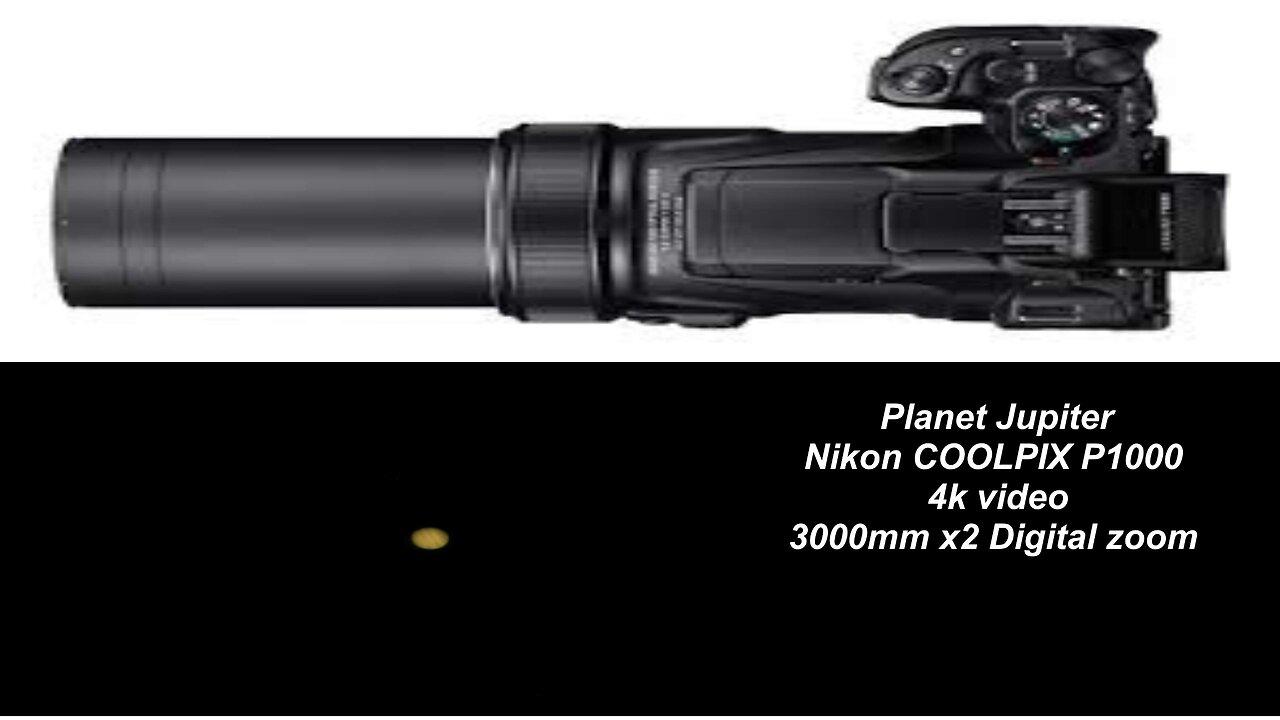Premium Only Content

Planet Jupiter Nikon P1000 4k 3000mm x2 Digital zoom
Jupiter is the fifth planet from the Sun and the largest in the Solar System. It is a gas giant with a mass more than two and a half times that of all the other planets in the Solar System combined, but slightly less than one-thousandth the mass of the Sun. Jupiter is the third brightest natural object in the Earth's night sky after the Moon and Venus, and it has been observed since prehistoric times. It was named after the Roman god Jupiter, the king of the gods.
Jupiter is primarily composed of hydrogen, but helium constitutes one-quarter of its mass and one-tenth of its volume. It probably has a rocky core of heavier elements, but, like the other giant planets in the Solar System, it lacks a well-defined solid surface. The ongoing contraction of Jupiter's interior generates more heat than it receives from the Sun. Because of its rapid rotation, the planet's shape is an oblate spheroid: it has a slight but noticeable bulge around the equator. The outer atmosphere is divided into a series of latitudinal bands, with turbulence and storms along their interacting boundaries. A prominent result of this is the Great Red Spot, a giant storm which has been observed since at least 1831.
Type Compact digital camera
16.0 effective megapixels (image processing may reduce the number of effective pixels)
Image sensor 1/2.3-inch type CMOS Total pixels: Approx. 16.79 million pixels
Lens NIKKOR lens with 125x optical zoom
Focal length 4.3 to 539 mm (angle of view equivalent to that of 24 to 3000 mm lens in 35mm [135] format)
Maximum aperture f/ 2.8 to 8
Construction: 17 elements in 12 groups (5 ED lens elements and 1 Super ED lens element)
Digital zoom magnification, up to 4x (angle of view equivalent to that of a 12000 mm lens in 35mm [135] format), up to 3.6x when recording movies in 2160/30p (4K UHD) or 2160/25p. (4K UHD)
-
 1:14:05
1:14:05
Tucker Carlson
19 hours ago“I’ll Win With or Without You,” Teamsters Union President Reveals Kamala Harris’s Famous Last Words
238K385 -
 1:58:31
1:58:31
The Dilley Show
19 hours ago $37.24 earnedTrump Conquering Western Hemisphere? w/Author Brenden Dilley 12/23/2024
176K50 -
 1:09:59
1:09:59
Geeks + Gamers
20 hours agoSonic 3 DESTROYS Mufasa And Disney, Naughty Dog Actress SLAMS Gamers Over Intergalactic
120K21 -
 51:59
51:59
The Dan Bongino Show
21 hours agoDemocrat Donor Admits The Scary Truth (Ep. 2393) - 12/23/2024
950K3.18K -
 2:32:15
2:32:15
Matt Kohrs
1 day agoRumble CEO Chris Pavlovski Talks $775M Tether Partnership || The MK Show
147K36 -
 28:23
28:23
Dave Portnoy
1 day agoDavey Day Trader Presented by Kraken - December 23, 2024
177K47 -
 59:29
59:29
BonginoReport
23 hours agoTrump, Murder Plots, and the Christmas Miracle: Evita + Jack Posobiec (Ep.110) - 12/23/2024
178K167 -
 2:59:14
2:59:14
Wendy Bell Radio
1 day agoNothing To See Here
139K80 -
 2:12:18
2:12:18
TheDozenPodcast
1 day agoIslam vs Christianity: Bob of Speakers' Corner
120K35 -
 14:36
14:36
The StoneZONE with Roger Stone
2 days agoRoger Stone Delivers Riveting Speech at Turning Point’s AMFEST 2024 | FULL SPEECH
139K36